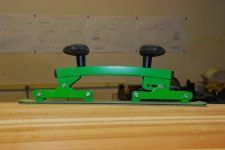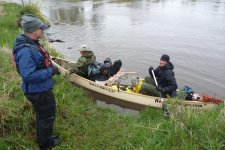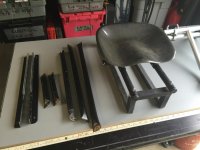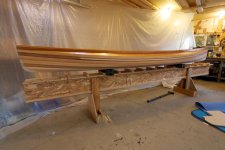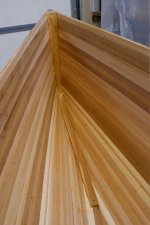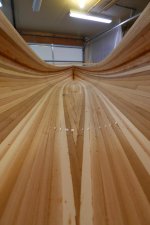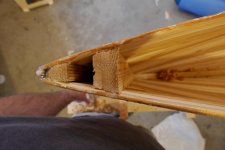Preamble.
The bubbles that appear in that grid pattern are surely fabric-related, and perhaps they travel as micro-bubbles along the fine filaments in each tow and collect at the intersections of warp and weft where the material is thickest, and nearest the surface. Don't know. But the important questions to address are, where is the air coming from, how does one prevent air from appearing, and how does one get rid of it before the epoxy sets up?
I think the 'out-gassing' term is often applied too broadly, because it comes late to the party, and it's not responsible for all of the bubbles we see when applying fabric. There's 'in-gassing' too (I made up the term), where air is introduced into the surface during the fabric wet-out and squeegee processes.
The tiny, individually harmless, champaign-sized bubbles (regardless of their source) happily join together and become larger bubbles-- then, toward the end they're heated by epoxy's exothermic cure and become even more prominent. Air volume is proportional to temperature, yet from 20C to 40C, thermal-inflation is just 6%.
Some builders pre-seal the hull with a coat of epoxy that's allowed to cure, and is lightly sanded before applying the fabric. I've seen that done, and it worked fine-- however, there appeared to be some tendency for the cloth to 'float' more than when applied to bare wood, which seemingly has some 'draw' to it. While out-gassing is virtually eliminated by pre-sealing the hull, in-gassing is still in the hands of the operator.
I've done propane torch flame-heating of the surface of epoxy to burst bubbles on a bar-top-type application where there is no fabric, and it works great. Here is a case where a pre-coat makes sense for a couple of reasons: it seals the wood against out-gassing, and it prevents pour-out imprinting. You can paint the seal-coat on lightly and carefully starting from one side, moving evenly across the surface (if you just pour your bucket of mixed epoxy onto the raw wood, it can leave that pour pattern visible on the surface). After the seal-coat is well sunk in and still green, mix the main batch and pour it in from one corner of the project and let it flow out across the work.
As you know, epoxy can catch fire, and you can scorch the wood through the epoxy. Keep the flame moving at all times. I wonder how the heat would work on bubbles under fabric-- I'll have to set something up and try it.
The random orbital sander vs longboard: typically the ROS does the initial heavy lifting, and the longboard is used to finish the sanding-- it's generally the last sanding tool except for a small hand rubber board and some 3M cloth used in detailed areas. The longboard preserves and enhances the broader, overall shape of the hull, whereas the ROS is more for getting serious work done efficiently.
The ROS requires some experience to handle, but it does a fabulous job in skilled hands. The challenge for new users is to keep from focussing locally, but rather, to keep the big picture in mind. The ROS has sharp edges and its pad doesn't curve much; it's an aggressive flat-bottomed tool sitting on a round hull.
Mark's project.
Where you sanded it-- it seems like there is fabric terrain there, and you still need a fill-coat. The other photos where the bubbles appear are deep, and the surface shows no fabric coming through whatsoever.
If the orientation of the squeegee is more vertical than horizontal it can cause in-gassing, starvation, and lifting of the fabric. It's so hard to know what brought the bubbles in, but I think the glassing technique is a place to start. Keep the squeegee at a low angle and work slowly and evenly.
Are these bubbles a structural issue? I'd say no.
If you wish to eliminate the bubbles in your hull you'll have to sand them out, and it looks like that will take off a good deal of the fabric-- maybe most of it.
Here's what I think: forget about the bubbles and move forward to finish the boat as though they didn't exist. If you sand off fabric you just have to add more in that area, and that's one gigantic GF.
If you can't abide the bubbles, smooth-sand the hull as it is, and paint it. I've used Epifanes 2-part Polyurethane Yacht Paint with great success. Martin Step's beautiful painted Kite hulls on greenval.com are works of art. I prefer painted strippers with just the inside wood showing-- to my eye that's the right balance.
This Kite is painted:
http://www.greenval.com/kite.html
